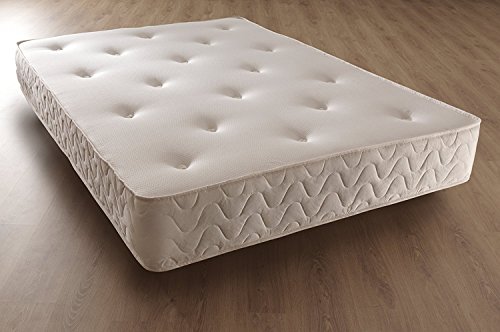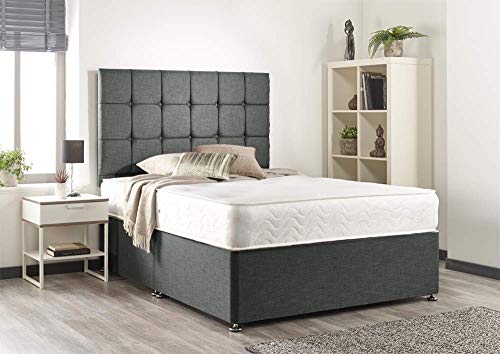갤러리 본문 영역
The 10 Most Terrifying Things About Bunk Bed Kids앱에서 작성
ㅇㅇ
24-07-05 01:46
 Are Kids Ready For Bunk Beds?
Are Kids Ready For Bunk Beds?Bunk beds are a great option for rooms with kids which are cramped with space. They can even double as a study area during the day.
You will need to evaluate your child's ability to dexterity and maturity when they are ready to move into bunk beds. It is also important to be aware of their sleeping habits.
Age of Transition to the Top Bunk
The age at when children are ready to move into bunk beds varies widely. However, most experts recommend that children not sleep on the top bunk until they are at minimum six years old. Children younger than 6 years old age are not likely to possess the dexterity or maturity to safely navigate the ladder. They may also have difficulty understanding and following safety regulations like not jumping off the top bed or stepping on the guardrails.
It's also important to take into consideration the level of raunchy your child is when determining if they're ready for a bunk bed. Children who tend to be disruptive or do not follow the rules shouldn't use bunk beds as they could cause serious accidents. Also, children who are more prone to falling out of bed or are very tall might not be able to safely use the top bunk when they are only six years old.
As kids get older, they may also outgrow their bunk beds. In this scenario, it's a good idea for them to switch to a traditional bed so they can rest more comfortably and have more space. It could be as easy as switching to twin-sized beds, or as difficult as acquiring a fun treehouse bunk bed like the Mathy by Bols bunk bed which can be transformed into the size of a full-size bed.
When it comes to making this transition, it is best to start with the bottom bunk and then work to the upper levels. By doing this, you can ensure that your child is mentally and physically ready for the transition. This will prevent them from getting discouraged if they do not immediately get the chance to climb up to the top bunk.
It's also a good idea for parents to teach their children the importance of following the safety rules no matter where they sleep on the bed. This includes teaching them not to jump from the bunk, not to hang items from the rails, and to always use the ladder correctly.
Safety Considerations
Bunk beds can be a great sleeping solution for children however, it's crucial to be aware of dangers to safety. By being aware of the risks, observing the instructions for assembly provided by the manufacturer and implementing other safety measures to ensure that your kids have a blast in bunk beds enjoyment without risk.
The ladder is a major safety concern, as it can be used to climb up and down from the top bunk. If left unsupervised, children can use the ladder as a fun thing, which could lead to dangerous consequences. Incorrectly secured ladders could fall off the sides of a bunk bed injuring children and leading to fatal head injuries. Children could also slip on the ladder and lose balance when trying to climb it, which could result in a fall.
To reduce the risk, teach your child to make use of the stepladder for climbing up and down the ladder and not as a plaything. A night light or other form of lighting near the ladder is also a good idea. This will help children to see their steps to the top and bottom in the dark, and prevent them from falling or tripping over toys or furniture in the room.
Safety considerations include making sure the mattress fits into the frame of the bunk bed kids (go to the website) bed in a proper way, ensuring that the bed is away from blinds, windows ceiling fans, and cords and making sure there aren't sharp edges on the ladder or bunks. It is also crucial to prohibit rough play and horseplay on the bunks as this can cause structural damage and lead to injuries.
Before you allow your children into the bunks make sure that there aren't loose bolts, weak spots or other risky areas. Make sure that there are no gaps in the safety railings, headboards or ladders where children could fall and get their limbs or head trapped. These gaps shouldn't be larger than 3.5 inch. As per safety guidelines, you must also ensure that the guardrails on either side of the top bunk are 5 inches or more above the mattress.
Picking the Right Bunk Bed
There are a variety of options for bunk beds that create a fun and social environment in children's rooms. With careful considerations and your children's input you can discover the perfect bunk bed layout to maximize space while accommodating a range of sleep preferences and requirements.
To help you navigate the selection of a bunk bed, start by exploring various materials and finishes to find the perfect fit for your kids' bedroom design. Think about the style of the headboards and feetboards as well the type of slats you prefer or solid panels or curved bed ends. Choose a hue and finish that will best match your existing decor and stands to the changes of time and fashion.
Then, decide if you would like the bunk beds that come with a ladder, an angled ladder, or staircase. Each provides unique safety and convenience advantages. Ladders, especially angled ones, can make use of less floor space, but are harder for kids to climb. Staircases require a bit more assembly time and could be expensive.
Standard bunk beds are two twin beds that are stacked perpendicularly on top of other, with an incline or ladder to get to the top. Alternatively, look into a loft bed which offers open space underneath to store things and a desk, or a play space. These kinds of beds can also accommodate a full-sized mattress on the bottom and a twin bed on the top, which provides flexibility in the dozing options for children sharing bedrooms or holiday homes.
It's time to start shopping for the bunk bed that is the best fit for your family. Look around at furniture stores as well as home improvement centers and online retailers to find the perfect bunk bed to meet your kids' specific needs.
Pay special attention to the frame material when choosing a bunk bed. It is important to ensure your child's safety and ease of use. Avoid cheap, inferior materials that can easily crack or sag. Solid woods are superior to particle boards, which consist of smaller wood flakes which have been glued together. They are more sturdy and durable.
Getting Started
There comes a time in the lives of most kids when they absolutely love the idea of bunk beds. They're the perfect solution to rivalry between siblings over who can sleep in the top bunk and they are a great way to accommodate more than one child in a small space. Bunks can also be a great and practical way to entertain your friends for sleepovers without the need of additional bedding.
There are a few things you should consider when choosing the right bunk beds for your family. Consider whether your children will be able to move into and out of the top bunk safely and comfortably. This is particularly important for children who are susceptible to sleepwalking or have difficulty avoiding rolling over the side of the bed. If they cannot do it without difficulty, then a ladder might be the best kids' bunk beds choice.
The overall style and look of the bunk bed is also important. You will want to ensure that it's an appropriate fit for the style of your room and that your kids enjoy it. Bunks are available in many styles, ranging from traditional to modern. They can also be constructed from different materials, including pine and MDF, depending on your preferences and the price you're comfortable with.
If you are assembling your bunk bed on your own it is recommended to create an inventory of all the tools that you will require and ensure that you have everything before starting. This will help avoid any frustrations like discovering that you've misplaced a screw midway through the project.
You can make your bunk bed more appealing to your kids by being creative. There are many fun add-ons available like themed bed tents that turn the top bunk into a castle or fort and the perfect place for them to play all day (and all night! ).
Kids are notorious for leaving their toys around, so you'll probably have to encourage them to put them away when they are finished playing. A bunk bed that has built-in storage is a good option for this, since it will allow you to keep your kids' bedrooms clean and tidy while still providing them with access to their most loved books and toys.

추천 비추천
0
0


댓글 영역